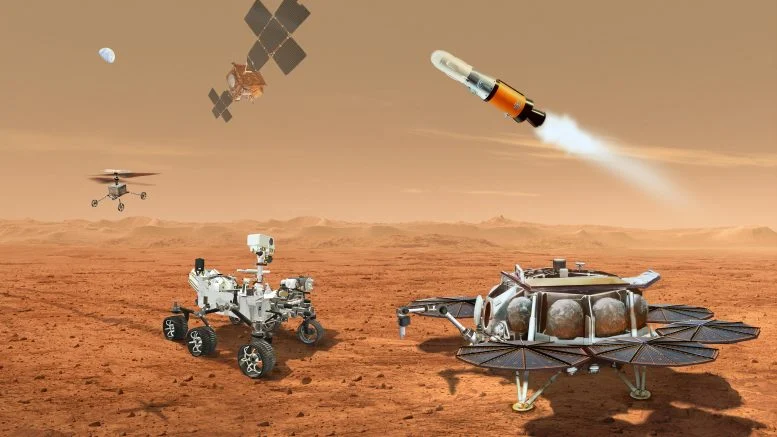In April of this year, NASA leadership publicly acknowledged the failure of mission plans to return rock samples from Mars. According to the most optimistic estimates, the images could be sent back to Earth no earlier than the 40s, when the first human landing on the Red Planet is planned. So the agency turned to private companies for help; seven of them are ready to help deliver Mars samples to Earth as quickly as possible.
NASA has announced that it is ready to sign a fixed-sum contract of up to $1.5 million with a number of companies that agree to conduct 90-day studies to find a way out of the financial and technological impasse of the Mars Sample Return. (MSR) mission. In addition to seven private contractors, the problem will be solved by two NASA centers – NASA Jet Propulsion Laboratory and Applied Physics Laboratory in Southern California. Johns Hopkins. The tenth partner was not explicitly named but may be the European Space Agency, NASA’s MSR mission partner.
“Returning samples from Mars will be one of the most challenging missions NASA has ever undertaken, and it is critical that we do it faster, with less risk, and at less cost. NASA Administrator Bill Nelson said: “I welcome the vision these companies, centers and partners represent as we seek fresh, exciting and innovative ideas to unlock the great cosmic secrets of the Red Planet.”
Lockheed Martin, SpaceX, Aerojet Rocketdyne, Blue Origin, Quantum Space, Northrop Grumman and Whittinghill Aerospace answered NASA’s call. Each will work on a part of the mission project in their area of expertise. But the same Lockheed Martin company stands ready to work on all aspects of the mission as a multidisciplinary aerospace specialist. SpaceX is ready to offer a Starship ship it has or will soon have to return large tonnage cargo to Earth.
Rocket engine specialist Aerojet Rocketdyne’s expertise will be related to the development of a liquid rocket engine for a launch vehicle that will lift samples into Mars orbit. Blue Origin has so far been tight-lipped, saying the Artemis moon mission will be available to return samples; He said it could be raised to the required level. Quantum Space has also not announced its plans yet.
The engines (Northrop Grumman) and single-stage rocket design (Whittinghill Aerospace) will be offered by two other companies that will be involved in the launch module.
Today, NASA’s Perseverance rover, delivered there in 2021, is collecting samples from Mars. Already filled about 40 of the 24 test tubes. The rover takes two samples, leaves one on the ground, and hides the second inside the case. When it comes time to take the tubes back to Earth, they will be removed from the rover or collected from the Martian surface by a rover or helicopter and delivered to the launch module. At least that’s what the original plan envisaged, which went out of control. NASA needs to hurry, otherwise all the laurels for delivering samples from Mars to Earth will go to the Chinese, who promised to do it in the 30s.













